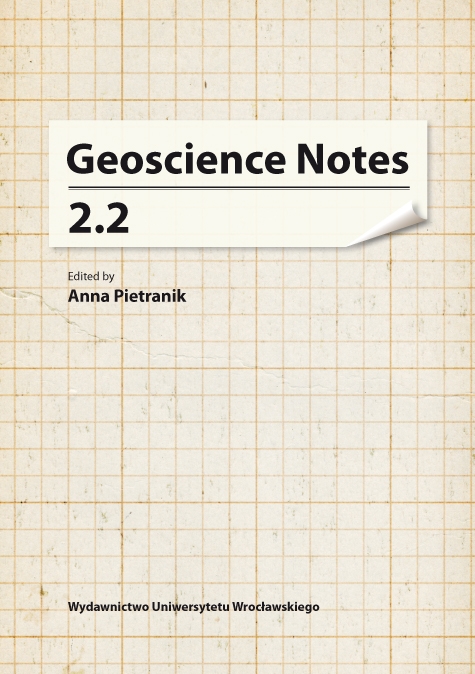Variable Pb sources found in garden soils in Szklary Górne and Szklary Dolne Lower Silesia
Słowa kluczowe:
garden soils, Pb isotopes, anthropogenic Pb sources, Lower SilesiaAbstrakt
Garden soils from the vicinity of Szklary Górne and Szklary Dolne Lower Silesia have variable Pb isotope composition consistent with at least two sources of Pb contamination. The profiles from Szklary Dolne have similar Pb isotope characteristic, which can be attributed to the atmospheric contamination by mixed pollution coming from coal burning and ore smelting. The 206Pb/207Pb ratios in these soils are 1.17–1.18, similar to those observed in various soils from Lower Silesia. This confirms that such an isotope ratio is characteristic of the predominant atmospheric Pb source, which is of the anthropogenic origin. On the other hand, the soils in the vicinity of Szklary Górne have variable isotope characteristic with two profiles having 206Pb/207Pb ratios below 1.17. The low values and the variability could be attributed to pollution from leaded gasoline, as the traffic is more intense close to Szklary Górne than Szklary Dolne, because the active quarry is situated in the close proximity to Szklary Górne. Alternatively, the source of Pb may be related to construction works, because a cable was found at the bottom of the profile with the lowest 206Pb/207Pb ratios. The implication of this local study is that the garden soils off er a detailed insight into potential pollution sources present in the area, which help to identify and characterize sources that are masked by more general pollution signal in the regional scale.
Gleby ogrodowe w pobliżu Szklar Górnych i Szklar Dolnych Dolny Śląsk mają zróżnicowany skład izotopów ołowiu, który mógł powstać wskutek zanieczyszczenia z co najmniej dwóch źródeł. Profile ze Szklar Dolnych mają podobną charakterystykę izotopową, którą można przypisać zanieczyszczeniom atmosferycznym związanym ze spalaniem węgla i hutnictwem. W tych glebach stosunek izotopowy 206Pb/207Pb wynosi 1.17-1.18 i jest zbliżony do stosunku 206Pb/207Pb zbadanego w innych, zanieczyszczonych glebach Dolnego Śląska. To może dowodzić, że taki stosunek jest związany z zanieczyszczeniami atmosferycznymi i jest pochodzenia atmosferycznego. Profile z okolic Szklar Górnych mają różne charakterystyki izotopowe, a w dwóch z nich stosunek izotopowy 206Pb/207Pb opada poniżej wartości 1.17. Niskie wartości i zmienność stosunków izotopowych mogą być przypisane zanieczyszczeniu gleb benzyną ołowiową, ponieważ ze względu na bliskość czynnej kopalni ruch samochodowy jest większy w okolicy Szklar Górnych niż w okolicy Szklar Dolnych. Inną możliwością jest kontaminacja gleby związana z robotami ziemnymi w tym rejonie. W odkrywce o najniższym stosunku izotopowym ołowiu na dnie znajdował się przewód elektryczny/światłowodowy. Nasze badania wskazują na możliwość wykorzystania terenów takich jak przydomowe ogrody do prowadzenia szczegółowych badań nad źródłami zanieczyszczeń gleb. Często te źródła zanieczyszczeń nie są możliwe do zidentyfikowania w badaniach składu izotopowego gleb w skali regionalnej.

